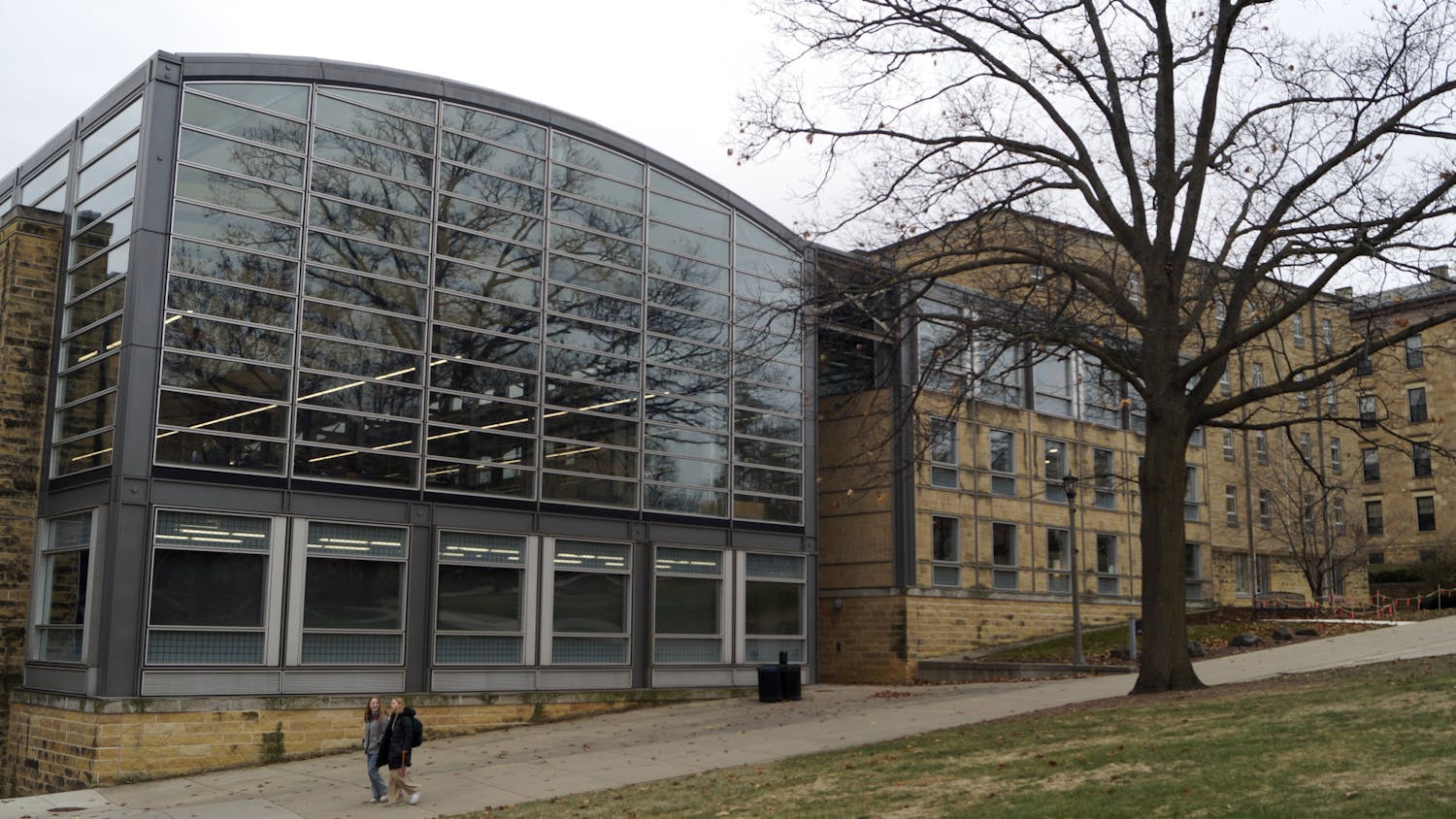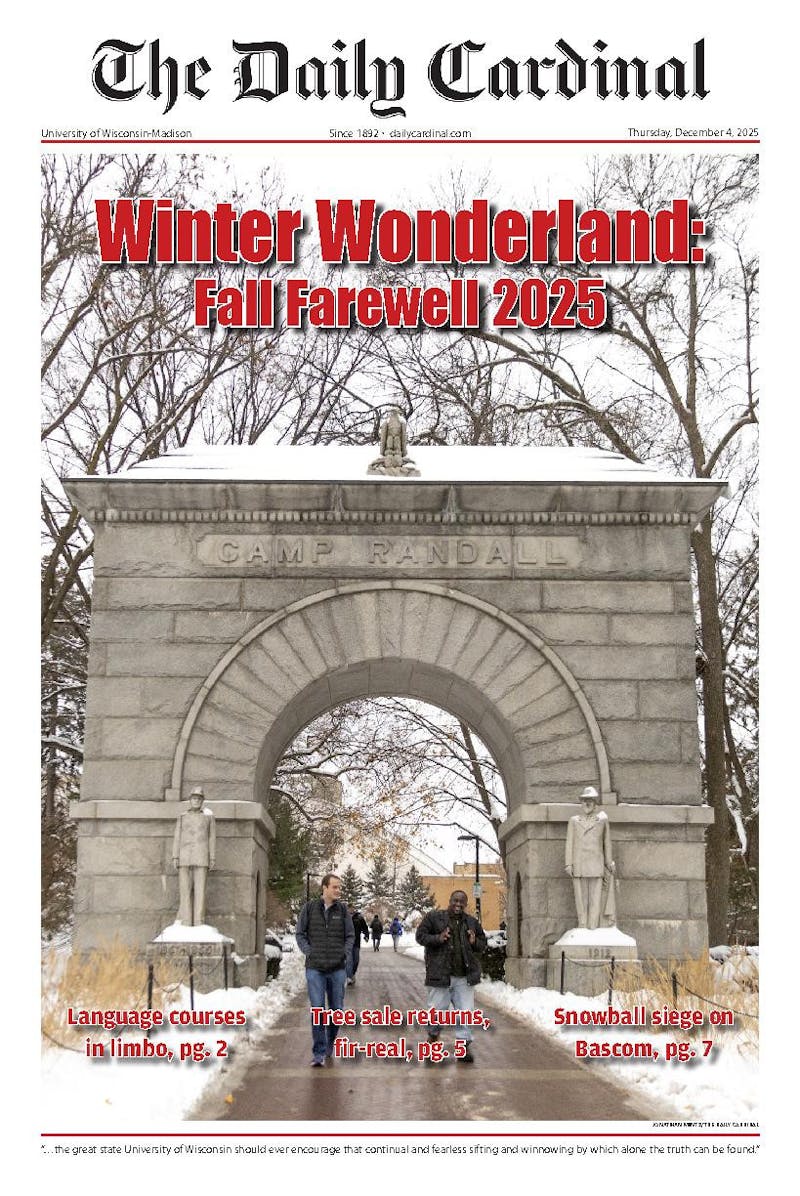Although it has become commonplace to find an array of empty beer cans adorning the grass outside of UW-Madison residence halls on Saturday mornings, there may be more discreet abuse issues glaring up at students from the bottoms of empty pill bottles.
And, unlike illegal narcotics, prescription drugs seem not to carry the same distinct social or legal stigmas many other illicit drugs do, and may be more prevalent on the UW-Madison campus than previously believed.
The majority of the people that have them either offer them to you or suggest them or you ask, and it's really not a huge dilemma, considering the abundance of prescription drugs that are out there,\ said a UW-Madison student who wished to remain anonymous.
The student said she has taken both Concerta and Adderall—popular amphetamines often prescribed to students diagnosed with Attention Deficit Disorder or Attention-Deficit/Hyperactivity Disorder—to help her study, though she does not have symptoms of either disorder.
""[Prescription drug use] is pretty out in the open. There's not too much stigma around it,"" said Bessie Oster, director of Facts on Tap, one of the first national substance-abuse prevention and education programs for college students.
""As of yet, there are few schools that have gotten strict sanctions in place to combat the issue,"" Oster said. ""It's not very far underground.""
According to a Jan. 2005 study published in the journal Addiction, 7 percent of all college students have used prescription stimulants like Ritalin, Adderall or Concerta at least once in their lifetimes for ""non-medical"" reasons.
The Addiction study also found that more than 80 percent of colleges with 10 percent or higher prevalence rates of non-medical prescription stimulant use had ""highly-competitive admission standards,"" a statistic that may strike a familiar chord at UW-Madison.
Just this past fall, UW-Madison's entering freshman class' average ACT score rose from a 24.9 composite in fall 2004 to 27.5, and entering classes' mean grade-point averages continue to soar as more students apply to the University, according to UW System records.
The primary reason, in fact, that students use prescription drugs for non-medical purposes is to enhance academic performance while studying for exams, Oster said, citing her extensive research on the issue.
The most commonly-abused prescription drugs are stimulants like amphetamines, Oster said, but opiate painkillers like Vicodin, Percocet and Oxycontin and anti-anxiety drugs like Xanax and Valium also rank highly for ""abuse potential.""
Some students abuse even less-popular drugs, Oster said, including sleeping aids like Ambien.
However, despite recent media frenzy regarding alleged over-diagnosis of ADD and ADHD and the amplified amount of amphetamines now available to diagnosed college students, stimulants are not the only prescription drugs abused on campuses.
The second-most common reason college students use prescription drugs is to enhance the preliminary effects of alcohol or other drugs like marijuana, a finding that has held consistent with many surveys, according to Oster.
Another anonymous UW-Madison student said he has tried Percocet, Valium, Vicodin, Oxycontin and codeine, in addition
to drinking heavily on weekends and smoking marijuana every day.
""Painkillers never did too much for me, but they're available, and they're available pretty easy, because you can obviously probably find somebody pretty easy who has them, because they are legal in the sense that they have the prescription,"" he said regarding his choices of prescription drugs.
He said he and his friends often crush Percocet or Vicodin and mix the powder with marijuana and then smoke it, or grind up Valium or Oxycontin and snort it like cocaine.
""It just makes it, like, a more crazy high, I would suppose,"" he said.
He reiterated, as many studies, including the Addiction journal study and Harvard School of Public Health College health study, have shown that college students who heavily consume alcohol and marijuana tend to experiment more often with prescription drugs—a fact that may point to heavy use on the campus of the nation's No. 1 party school relative to other schools.
""I would say that both alcohol and pot are gateway drugs [to trying prescription drugs],"" he said. ""I mean, if you're drinking heavily and you're smoking pot, and you're hanging out with your buddies, what's popping a Percocet, you know, or popping a Vicodin?""
Although students may have easy access to prescription drugs, the UW-Madison administration has not, as of yet, been able to designate prescription drug abuse as a prevalent problem on campus.
""My perception is that alcohol is still the biggest, most overused drug in this area,"" said Interim Associate Dean of Students Elton Crim of the campus' substance abuse issue.
The UW-Madison administration has seen maybe one or two cases, according to Crim, in which he can recall involvement of prescription drugs, such as a student taking too much of a particular drug or ingesting several different
drugs and using them as a way to stay awake and functional ""through some very stressful times.""
""It's a really difficult question to try and assess, though, because there's typically no kind of behavioral manifestation associated to any large degree with prescription drug abuse,"" Crim said. ""It's not like alcohol, where people get drunk and tear something up.""
Although some UW-Madison students receive prescriptions from their hometown physicians, many are prescribed medications like antidepressants or amphetamine stimulants by UW-Madison's University Health Services, according to Crim.
""They're certainly prescribed a lot for students that are dealing with stress and psychological problems,"" Crim said. ""Where that rises to the level of abuse is a difficult assessment to make.""
In any case, prescription drug abuse is on a steady rise in Madison and nationwide, according to both Oster and the anonymous male student.
""When people hear of someone having a Ritalin prescription or Adderall or Percocet or Vicodin, people tend to, like, flock to them,"" the anonymous male student said. ""I'd say at least 80 percent of college students in Madison who get prescriptions like that definitely deal them out.""
He also described the rising levels of addiction to prescription drugs.
""I think smoking it and snorting it is on an even higher rise than just taking it,"" he said. ""I don't think people get enough of it at this point.""
\





